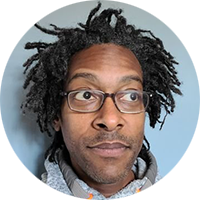This post originally appeared in our newsletter on July 7th, 2022. Sign up to get our latest research, insights, tools, and resources delivered straight to your inbox twice a month.
As we think about positioning agencies for a potentially turbulent 2023, getting the right people in the right seats is even more of a top priority. Getting this right allows owners and partners to focus their energy on more strategic questions vs. putting out that day’s fire. That additional strategic bandwidth can make all the difference when the market gets choppy.
Inspiration
This post was inspired by conversations that have played out several times over the years. An agency owner reaches out about challenges they’re facing. I respond with something like:
“Happy to, but instead of just treating this symptom, what if we also did some diagnostic work and made sure we’re getting at the root of the issue?”
The owners who are interested in this kind of deeper solution move on to what we call our Comprehensive Growth Evaluation.
Part of our CGE consists of evaluating whether or not the firm has the right people in the right roles to be successful. When we set out to solve strategic challenges, we often have to do some operational tidying up first. This ensures a strong foundation and improves the chance of success.
The following is how we think about roles and structure at digital agencies.
Structure Reduces Friction.
Projects flow more smoothly through an agency with a well-defined structure, resulting in happier clients, happier employees, and higher margins. Getting this right early provides a strong foundation for future growth and can reduce or eliminate many growing pains.
There’s No “Right” Model.
One of the most exciting things we’ve learned from 7 years of research into ~30k digital shops is there are many ways to run a successful shop. Everything from traditional hierarchical structures, to pod systems, to employee-lite, to T-shaped and V-shaped models have been successful.
The most common structure is still the old-school hierarchical model. It’s well-established, hailing from the middle of the last century, and it’s something employees are familiar with.
Regardless of the model you’re running, the following roles will need to be filled, even if multiple people do them.
Functional Areas
A digital shop has three functional areas: RevGen, Production, and Support.
Revenue generation – salespeople, marketers, account managers, and business development professionals. The job of communicating your value to others and guiding them to production.
Production – developers, designers, marketers, project managers. Delivering value by doing what you’ve sold.
Support – accounting, human resources, legal, and management. Ensuring RevGen and production run smoothly and handling compliance-related items.
Leadership – owners and partners. Decide the firm’s direction.
Roles & Goals
As you go through the roles, think about who in your firm does this now, how effective they are at that, and who else could be trained or hired to fill gaps. We often see shops where the role lines are blurred and one or two people take on significantly more than they should be. This ultimately reduces their effectiveness in any one role.
Keep in mind that who’s doing the various roles changes as agencies grow. At smaller shops, owners are responsible for almost everything, while at larger shops, they move to more guiding roles.
RevGen Roles
In the sales section, the prominent roles are new lead generation and closing qualified leads. New lead generation activities, either via outbound sales prospecting or qualifying inbound leads from marketing, are handled by Business Development Representatives (BDRs) or Sales Development Representatives (SDRs). A Sales Executive handles closing qualified leads.
At smaller firms, the owners handle these roles. Once a shop hits around 20 FTEs, they’ll typically have a dedicated person for one or both roles. By the time they’re about 50 FTEs, they’ll have a small team running this.
Marking has a few more roles available, but not all are necessary, depending on the agency’s strategy. The first role is around managing your brand, and it’s typically handled by a more senior marketing person (Director of Marketing, CMO, or owner at smaller shops). Next is content creation. Many digital shops rely on content marketing to generate new leads. Smaller shops do this in-house, medium firms outsource it, and then as firms grow, they bring it back in-house. Some shops employ a leadgen strategy that includes advertising, but we only see it used by maybe 1/3 of shops. Public relations also fits under the marketing umbrella but is more common at larger firms. Pre-covid, we saw dedicated roles for conferences and tradeshows to handle things like sponsorship/booth/presence management, but this has died down a bit.
Account management’s job is to retain clients and grow accounts. A single person typically handles this for a few accounts. The larger the accounts, the fewer they’ll manage. They act as an internal advocate for their accounts, working closely with project management to ensure the client’s needs are being met and they’re within budget.
Business development handles partnerships for your firm. An owner or partner typically manages this. Having someone dedicated to this role is unnecessary for most shops until they’re above 50 FTEs.
Production Roles
Depending on your digital shop type, developers, designers, and marketers play similar roles. There are billable employees who deliver value to your clients, and managers who understand a lot about the technical side and a bit about the business side, who manage the production departments.
Project managers plan, facilitate, and track the projects your firm is working on. They work closely with the other production team members, the Account Manager, and the client’s team to ensure projects are running smoothly. Again at smaller shops, this role is handled by an owner, but once a firm hits about 15 FTEs, a dedicated PM is usually necessary.
Support Roles
Accounting monitors, stores, and analyzes your firm’s financial information, manages transactions, and prepares financial statements used in tax preparation. This is almost always outsourced to dedicated CPA firms, but we see some where the analysis is done in-house when an owner or partner has a financial background.
Human resources handles employee attraction, onboarding, and retention and works with legal and management to develop policies for benefits, compliance, compensation, continuing education, etc. This role is typically non-existent or outsourced until around 20-25 FTEs.
Legal works with HR and Management to ensure policies, contracts, and agreements are written in a way that reflects management’s intentions and is in accordance with local laws. This is almost always outsourced, even above 50 FTEs.
Management’s job is to improve the efficiency and effectiveness of their organizations. Most shops add dedicated employees at various levels to manage the functional areas as they grow. These can be titled Vice Presidents, Directors, or Chief X Officers.
Leadership sets the mission, vision, strategy, and goals for the firm as a whole.
Time for Change
It can take months, if not years, for firms to get these roles dialed in (if they ever do), but it makes just about everything easier when they are. Take the second half of the year and dedicate some time to doing your own Role, Goal, & Structure review. I guarantee you’ll find something interesting, and if you get stuck, we designed a portion of our Comprehensive Growth Evaluation to address precisely this challenge.




